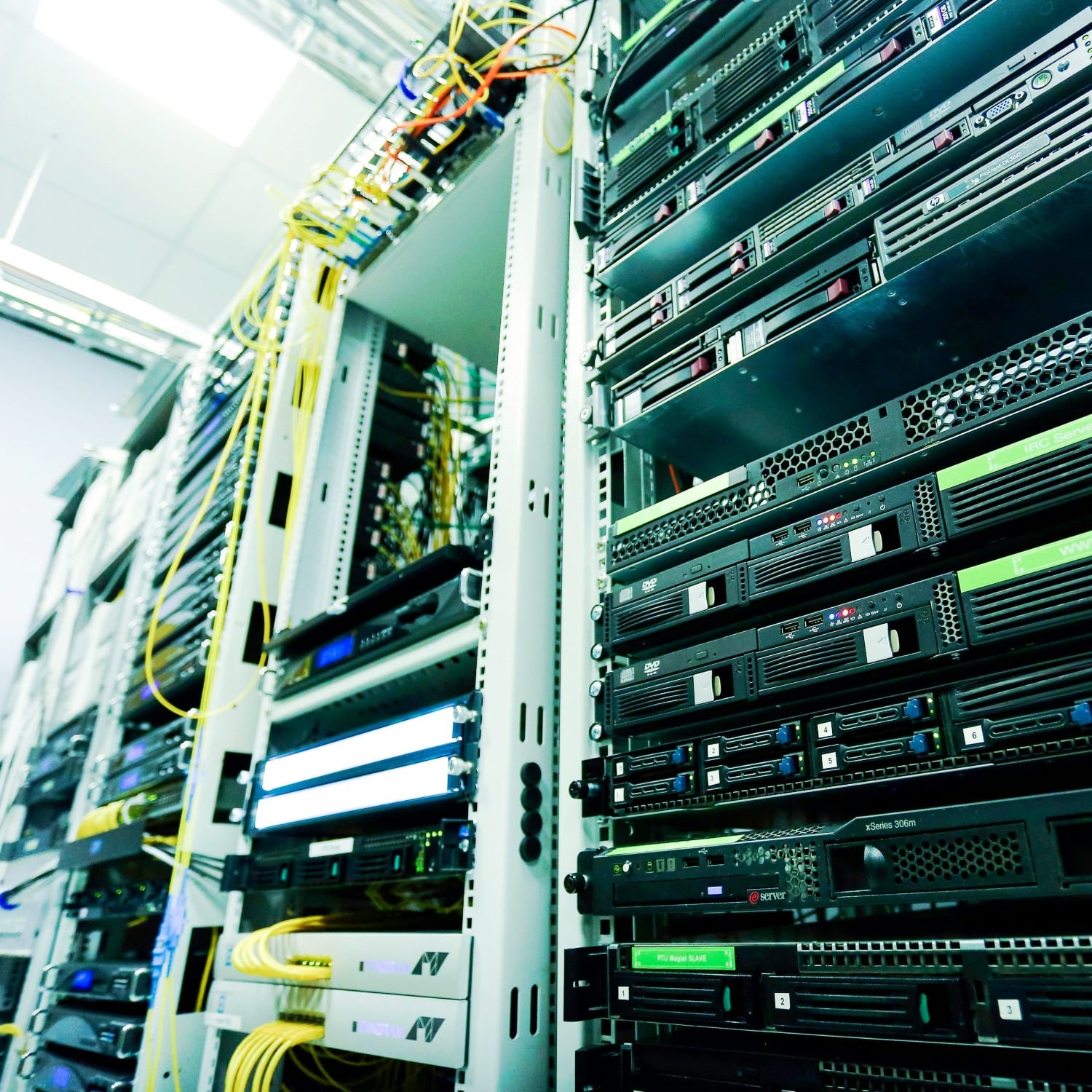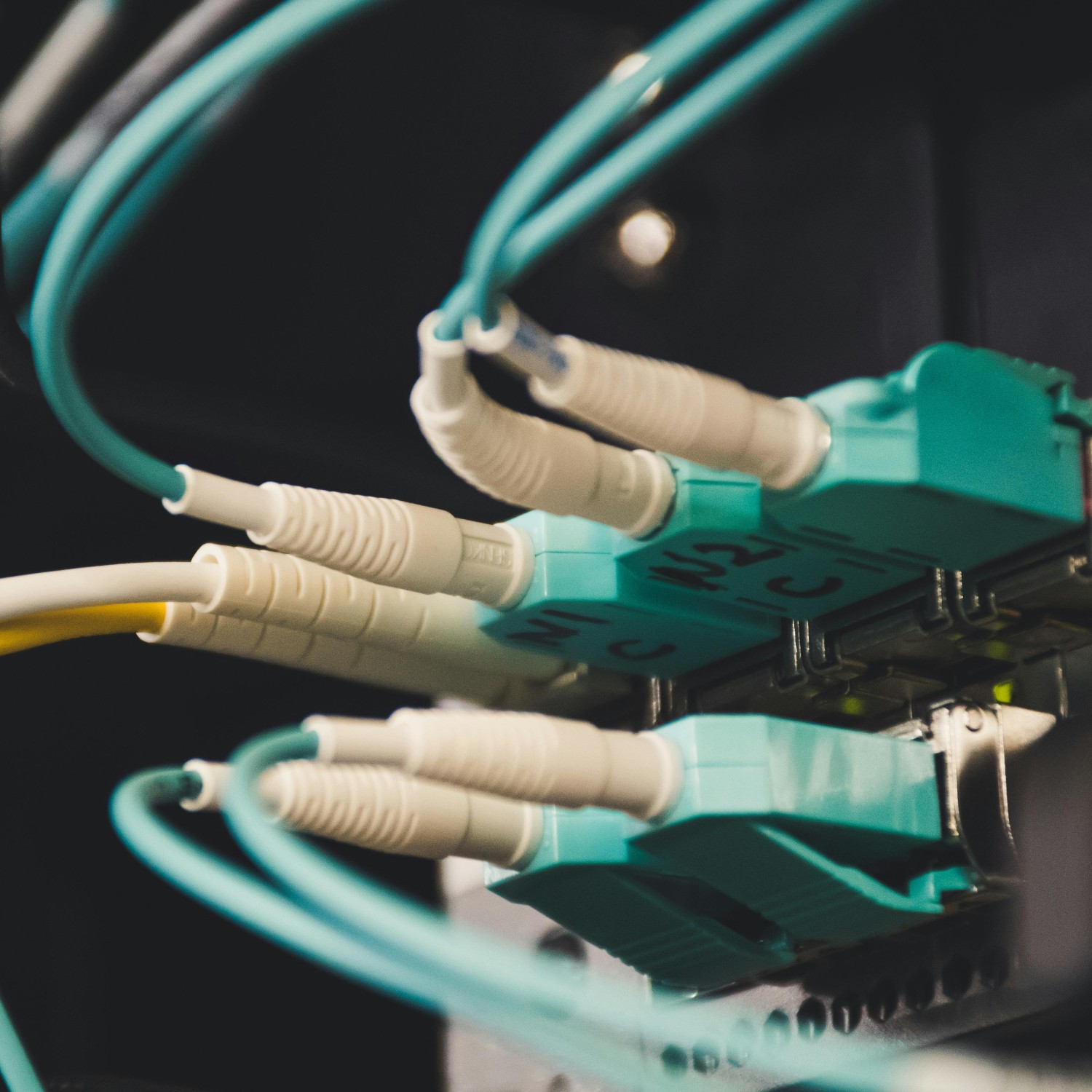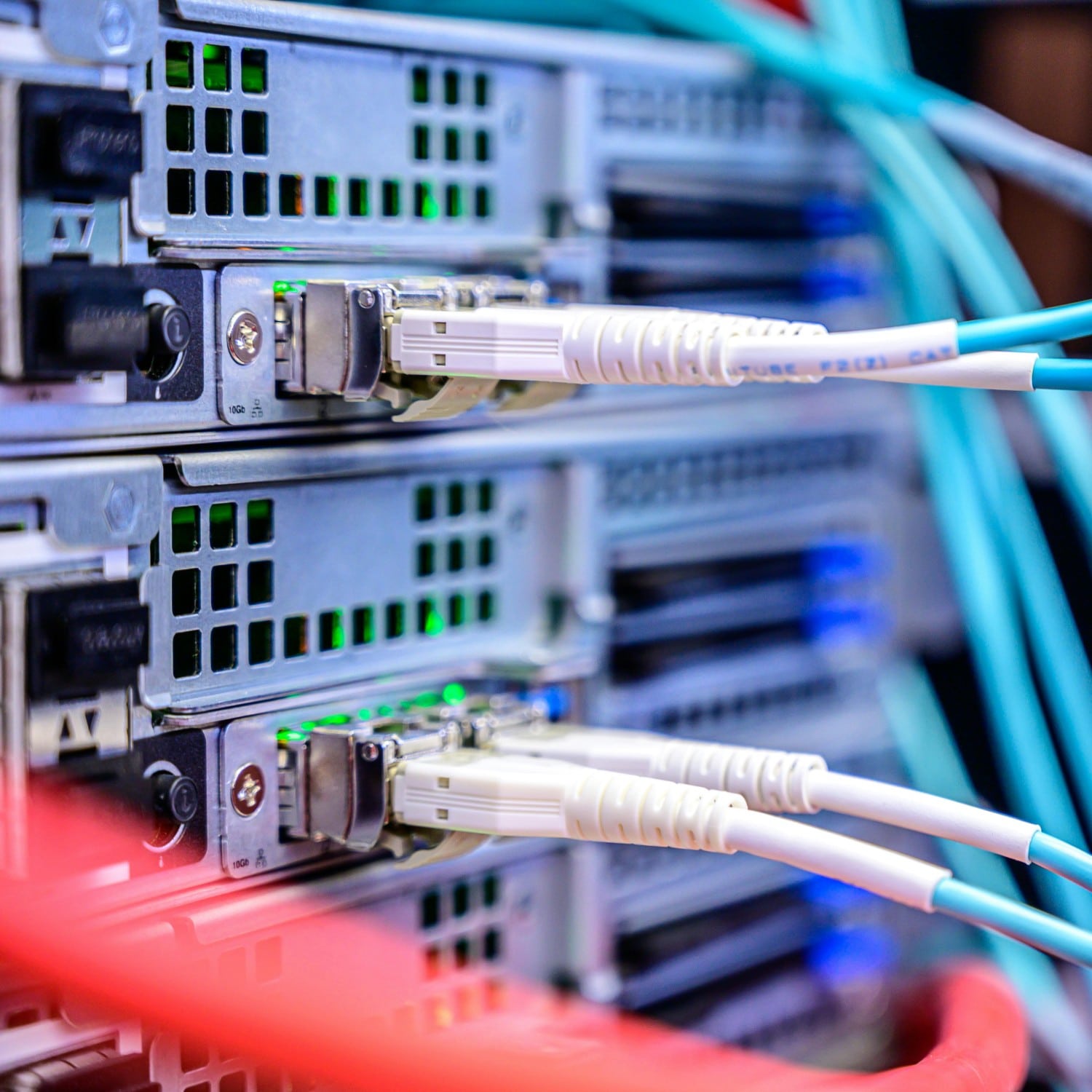Are you looking for a high-performance SSD array for enterprise data centers that can handle a heavy workload and accelerate your data processing tasks? Look no further than our cutting-edge SSD array server solution.
With the rising demand for faster and more efficient data processing in today’s competitive landscape, enterprise data centers need a reliable storage solution that can meet their high-performance requirements.
Our SSD array is equipped with the latest NVMe technology, RAID configurations, and high-speed PCIe interfaces to deliver unparalleled performance and reliability.
The server’s solid-state drives (SSDs) provide lightning-fast latency and bandwidth, making it ideal for compute-intensive workloads, big data applications, and high-capacity storage needs. Whether you are running complex queries, handling massive datasets, or managing critical applications, our SSD array is designed to accommodate your most demanding tasks with ease.
In addition, our SSD array offers advanced data protection features, including NAND flash technology and sophisticated controllers, to ensure the integrity and security of your valuable data. Say goodbye to the limitations of traditional storage solutions such as SATA or SAS hard drives and experience the power and efficiency of our high-performance SSD array server.
Upgrade your data center operations today with our state-of-the-art SSD array solution and unlock the full potential of your enterprise infrastructure.
What is a High-performance SSD Array Server and Why Use It?
In the modern digital landscape where data is the lifeblood of businesses, having a high-performance SSD array server has become essential for organizations looking to stay ahead of the competition.
- SSDs (Solid State Drives) are a type of storage device that use NAND-based flash memory for data storage, offering faster read/write speeds compared to traditional hard drives.
- A high-performance SSD array server utilizes multiple SSDs configured in an array to deliver superior performance, scalability, and data protection.
- The server leverages advanced storage technology such as NVMe (Non-Volatile Memory Express) drives, PCIe (Peripheral Component Interconnect Express) connectivity, and RAID (Redundant Array of Independent Disks) controllers to maximize storage efficiency and speed.
Benefits of Using a High-performance SSD Array Server
- Accelerated Workloads: With high read/write speeds, the server can handle intensive computing tasks, making it ideal for high-performance computing applications and big data processing.
- Increased Storage Capacity: SSD arrays can accommodate large amounts of data, ensuring that businesses have the storage capacity to manage their growing datasets effectively.
- Low Latency: The use of NVMe drives and fast SSD technology reduces data access times, minimizing latency and enhancing overall system performance.
- Data Protection: RAID configurations in the array server provide data redundancy and protection against drive failures, ensuring data integrity and availability.
- Enhanced Data Throughput: The high bandwidth and superior I/O capabilities of SSD arrays allow for seamless transfer of large data files and improved storage performance.
- Scalability: The server can be easily scaled to meet the evolving storage needs of enterprises and data centers, adapting to changing workloads and requirements.
- Optimal Storage Solutions: By using enterprise-grade SSDs, businesses can leverage the reliability and endurance of these storage devices for critical data operations.
A high-performance SSD array server is a game-changer in the realm of data storage and computing, offering unparalleled speed, performance, and reliability for organizations that require massive amounts of data processing. By harnessing the power of SSD technology and advanced storage configurations, businesses can unlock new levels of storage performance and efficiency.
For high-performance computing and data storage solutions, consider investing in a high-performance SSD array server to propel your business forward in the digital age.
Why SSD Over Traditional Hard Drives for Data Center Storage?
When it comes to data center storage, Solid State Drives (SSDs) have emerged as the superior choice over traditional Hard Drives (HDDs). Here’s why SSDs are the preferred option for data center storage and why businesses should consider making the switch:
- Operating System Compatibility: SSDs are compatible with a wide range of operating systems, making them versatile for various data center setups.
- High Performance and Data Center SSDs: SSDs offer significantly faster read and write speeds compared to HDDs, resulting in enhanced performance for data-intensive tasks in a data center environment.
- Enterprise SSDs: Enterprise-grade SSDs are built for reliability and endurance, making them ideal for use in data centers where constant uptime and data integrity are crucial.
- SSD RAID: Implementing SSDs in RAID arrays can provide both performance benefits and data redundancy, ensuring data center operations run smoothly.
- Scalable NVMe SSDs: NVMe SSDs offer scalability and high-speed data transfers, making them suitable for handling large amounts of data in enterprise environments.
- Kingston Technology SSD Drives: Kingston Technology is a reputable provider of SSDs known for their quality and reliability in data storage solutions.
- NVMe Storage Systems: NVMe-based storage systems leverage the speed of NVMe SSDs to deliver optimal performance for data center applications.
- NAND Flash Memory: SSDs utilize NAND flash memory technology, which offers faster data access and transfer speeds than traditional HDDs.
- High Performance Storage Solution: SSDs are built using advanced technology to deliver high performance and low latency storage solutions for demanding data center workloads.
- Energy Efficiency: SSDs consume a fraction of the power compared to HDDs, leading to cost savings and reduced energy consumption in data center operations.
Choosing the right SSD for your data center storage needs can significantly enhance performance, reliability, and scalability. With features like NVMe technology, RAID support, and compatibility with enterprise environments, SSDs from trusted brands like Kingston Technology are designed to transform how data is stored and accessed in modern data centers.
Make the switch to SSDs and experience the benefits of high-speed, efficient, and reliable data storage solutions for your business.

Understanding Raid Configurations in SSD Arrays for Enterprise Storage
In the world of enterprise storage, RAID configurations play a crucial role in optimizing data performance, reliability, and capacity. When it comes to SSD arrays, the use of fastest NVMe SSDs, such as those designed by Kingston, can significantly enhance the speed and efficiency of data storage and retrieval.
Data stored on SSDs are accessed at lightning-fast speeds, making them ideal for mission-critical applications where read or write speeds are essential. RAID levels are used to determine how data is distributed and protected across multiple drives, with the RAID controller playing a key role in managing this process.
Enterprise NVMe SSDs, like the KIOXIA CM6 Series, offer high-speed storage for transaction files and caching areas, perfect for demanding server and storage environments. End-to-end data protection is crucial for preventing data loss and ensuring the integrity of stored information.
In software-defined storage systems that require scalable capacity and flexibility, RAID configurations are a vital component. However, it’s important to note that RAID reports storage capacity using powers of 2, which can sometimes lead to less apparent storage capacity than expected.
Key Points:
- RAID configurations are essential for optimizing SSD array performance and reliability.
- Fastest NVMe SSDs, like Kingston’s offerings, enhance data access speeds.
- RAID controllers manage data distribution and protection across multiple drives.
- Enterprise NVMe SSDs, such as the KIOXIA CM6 Series, provide high-speed storage for critical applications.
- End-to-end data protection is crucial for preventing data loss in storage systems.
By understanding and implementing optimal RAID configurations in SSD arrays, organizations can transform their data storage infrastructure to meet the demands of modern applications, including big data analytics and high-performance computing tasks.
Scaling Enterprise Storage as Strategy for Expanding SSD Arrays
Businesses are constantly seeking ways to transform their data storage to keep up with the growing demands of their operations. One key strategy for expanding storage arrays is through the utilization of NVMe SSDs, which are designed to deliver high-speed performance and efficiency in enterprise environments.
When it comes to scaling storage arrays, incorporating KIOXIA CM6 series SSDs can be a game-changer. These SSDs offer advanced features such as a dedicated caching area on high-speed storage, making them ideal for server storage applications. Despite showing less storage capacity than traditional hard drives, the performance advantages they provide more than make up for it.
Implementing software-defined storage solutions can further enhance the scalability and flexibility of enterprise storage. By leveraging technologies that allow for tiered storage and cost-effective solutions, businesses can optimize their storage infrastructure to meet their specific needs.
Additionally, utilizing RAID levels with redundancy is crucial for ensuring data integrity and availability in enterprise storage environments. By making individual disk drives redundant, as well as implementing RAID configurations, businesses can create a robust storage system that can withstand failures without compromising data integrity.
How to Optimize Workloads With High-performance SSD Arrays?
Businesses and organizations rely heavily on data to drive their operations forward. As such, the need for high-performance storage solutions has become paramount. One key technology that has revolutionized data storage is the Solid State Drive (SSD). SSDs are designed to transform the way data is stored and accessed, offering faster speeds and improved reliability compared to traditional Hard Disk Drives (HDDs).
One of the key benefits of using SSD arrays in optimizing workloads is the significant performance advantages they offer. By leveraging SSD technology, businesses can dramatically reduce data access times, leading to improved overall system performance. Additionally, SSD arrays are available in various configurations, including the latest NVMe™ SSDs, which provide even faster speeds and lower latency.
When it comes to optimizing workloads with high-performance SSD arrays, there are a few key considerations to keep in mind:
- Server Operating System Compatibility: It’s important to ensure that the SSD arrays are compatible with the server operating system to maximize performance and functionality.
- Software Defined Storage Integration: SSD arrays can be seamlessly integrated with software-defined storage solutions to further enhance performance and scalability.
- Storage Capacity: While SSDs generally offer faster speeds, they may come with a compromise on storage capacity compared to HDDs. However, advancements in SSD technology have resulted in larger storage capacities being available.
- RAID Configuration: Utilizing RAID with SSD arrays can provide redundancy and improve data protection, ensuring data integrity and availability.
SSD arrays, particularly NVMe™ SSDs, are ideal for optimizing workloads and delivering high-performance storage solutions. With their cost-effective nature and significant performance advantages, SSD arrays have become a popular choice for businesses looking to improve their data storage infrastructure.
By embracing SSD technology, organizations can unlock new levels of efficiency and productivity in their operations.

Data Deduplication Techniques for Efficient Data Storage
In the fast-paced world of data storage and management, efficiency is key. One tried and tested method for optimizing storage capacity is through data deduplication techniques. By identifying and eliminating duplicate copies of data, organizations can significantly reduce their storage needs and improve overall efficiency.
NVMe SSDs, such as those offered by Kingston, are leading the charge in transforming data storage landscapes. With their high-speed performance and reduced latency, NVMe SSDs are becoming the go-to choice for organizations looking to improve data access and processing speeds. When combined with data deduplication techniques, NVMe SSDs can further enhance storage efficiency.
By eliminating duplicate data blocks and utilizing the available storage capacity more effectively, organizations can save on storage costs while still enjoying significant performance advantages.
Data deduplication works by scanning data for duplicate blocks and storing only a single instance of each block. This results in less storage capacity being required, as the system only needs to store unique data blocks. As a result, organizations can make the most of their available storage capacity without compromising on performance.
NVMe SSDs are available in a variety of capacities, making them a versatile option for organizations of all sizes. Their speed and reliability make them an ideal choice for mission-critical applications that require high-performance storage solutions.
When combined with data deduplication techniques, NVMe SSDs can be a cost-effective storage solution for organizations looking to maximize their storage efficiency.
Challenges and Solutions in Deploying Enterprise SSD Arrays
When it comes to deploying enterprise SSD arrays, there are a number of challenges that organizations may face. From storage capacity limitations to performance issues, it’s important to address these challenges head-on to ensure a smooth and efficient deployment process.
Below are some of the common challenges and solutions in deploying enterprise SSD arrays:
Storage Capacity Limitations: One of the primary challenges in deploying enterprise SSD arrays is the perceived notion that SSDs offer less storage capacity compared to traditional HDDs.
- Solution: Modern enterprise SSD arrays come in larger capacities that can meet the storage requirements of most organizations. By carefully planning and optimizing the storage layout, organizations can take advantage of the benefits of SSDs without compromising on storage capacity.
Cost Concerns: Another challenge organizations face is the higher upfront cost of SSDs compared to HDDs.
- Solution: While SSDs may have a higher initial cost, they deliver significant performance advantages, such as faster data access and transfer speeds, which can result in improved productivity and efficiency. Organizations should consider the long-term benefits of SSDs when evaluating the cost.
RAID Configuration: Implementing RAID configurations with SSD arrays can be complex and require careful planning.
- Solution: Organizations should work with experienced IT professionals to design and implement the appropriate RAID configuration for their SSD arrays. RAID configurations can help improve data protection and system performance, ensuring data integrity and reliability.
Free Storage Space Management: Managing free storage space on SSD arrays is crucial to maintaining optimal performance.
- Solution: Regularly monitoring and optimizing free storage space on SSD arrays can help prevent performance degradation and ensure efficient data storage. Implementing storage tiering and data deduplication techniques can also help optimize free storage space.
Deploying enterprise SSD arrays comes with its own set of challenges, but with careful planning and implementation, organizations can overcome these challenges and unlock the full potential of SSD technology.
By addressing storage capacity limitations, cost concerns, RAID configurations, and free storage space management, organizations can maximize the performance and efficiency of their enterprise SSD arrays.



